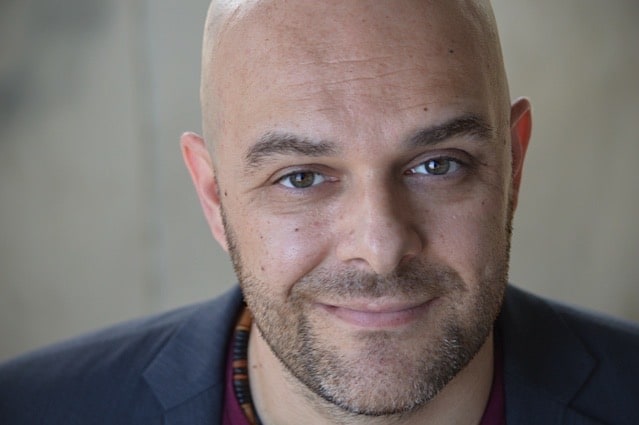As creators, it’s important to realize that the way audiences interact with media, brands, and entertainment has changed. And in order to compete in the marketplace, we must be able to adapt to a business model that is constantly evolving. Enter Houston Howard. The entertainment thought leader has advised entities from Mattel to Disney and designed a number of transmedia-focused projects for the likes of Fox, The CW, and TNT. Howard recently taught a workshop for The Greenhouse entitled “The Game-Changing Power of Super Story,” which covered strategies on how to develop stories and characters across multiple mediums. In case you missed it, Howard took time from his busy schedule as the chief storyteller and co-founder of One 3 Creative to recap some of the main ideas from his course. Keep reading for a conversation about the concepts of super story and transmedia projects, as well as an expert’s tips on them.

Can you start by defining the term “super story?”
Absolutely. At its fundamental level, the super story is a storytelling model that takes advantage of every available creative tool, delivery platform, design medium, and distribution method in order to tell more than one story. It’s essentially creating a diversified entertainment brand in which stories are woven together creatively, creating an ecosystem of content. This can be as big as the cinematic Marvel Universe or as small as digital content on social media. No matter the scale, though, the principles remain the same. You want to think of your entertainment as a branded ecosystem rather than just focusing on it as a product. That is, if you’re a filmmaker, it’s easy to just think about how to nail the film. If you’re a novelist, you probably are just focused on the novel, itself. But in today’s over-saturated, commoditized market, we have to approach our creative work differently. We have to use all the tools in the toolbox to reposition our art.
With that in mind, how do you recommend optimizing different projects and media for the entire entertainment spectrum?
I think that requires a two-fold answer because when you’re talking about a super story, you are operating with both the creative and business sides of your brain. On the business side, you optimize your project by diversifying across platforms as a way to better compete. This allows you to tap into a wider variety of demographics and reach more people. We live in an age where we’re surrounded by so much content in so many different forms that everyone can pick and choose how they want to consume it. Take my nephew, for example. He plays video games for what seems like 15 hours a day, but he doesn’t watch movies or a lot of TV. Some people prefer music or board games. Since everyone has different preferences, you limit the number of people you can reach when you just do single-channel entertainment. Diversification, on the other hand, broadens your brand’s demographic and grows your audience share in today’s market. Plus, it opens you up to new revenue streams. Now instead of trying to monetize one product, you have four or five different products you can monetize simultaneously that can feed into each other. And I think one of the most important ways that diversification optimizes the brand is by hedging risk. As independent creators, we’re trying to get investment from either corporations or individuals. In order to do that, we have to convince them that the risk of what we’re doing is not as great as the potential benefit on the backend. Diversifying across platforms allows you to mitigate the risk by saying something like, “Since I have four products, if only half work, they’ll still subsidize the loss of the other two.” And diversifying can look however you want it to look. There are a thousand ways to tell a story, from paintings to interpretive dance to movies.
That makes sense. Can you speak to the creative side you mentioned in regard to optimizing your project?
The way to optimize creatively is to really think about what I call the “story world” of the piece. When we think about story, we typically focus on the characters, the dialogue, or the plot. But when you’re trying to optimize for super story across platform expansion, understanding the world is just as important as understanding the story. To illustrate what I mean by the “story world,” I’ll use the example of “Black Panther.” We understand the story, which is the struggle between King T’Challa and Killmonger for the throne. The story world of “Black Panther,” though, is Wakanda. This fictional African nation with super-fancy technology carries much more story potential for additional narratives that may or may not have the character of Black Panther in them. So if you do the story world right and tell a great story inside of a great story world, you’re of course going to have a great product. But you’re also going to have an engine in the story world that will continually produce more stories over time, which is something you will need when you’re talking about that diversified product line. Because the essential element of a super story is to never tell the same story twice. It’s not that old-school multimedia model in which you just take the same story and adapt it across platforms. Rather, we want to continually tell new stories on different platforms in a way that they all work together for a greater whole.
Speaking of transmedia projects, can you summarize some of the essential creative strategies for them?
There are some easier strategies, which include identifying unanswered questions in the original story. You’re going to have things that are unexplained in every story so you want to be able to identify those questions and then answer them in a different platform. Take “Pulp Fiction,” for instance. There’s a scene where Vince Vega looks inside of the briefcase, and the audience doesn’t know what’s in it. Answering that question could be a transmedia opportunity for Tarantino. For example, he could release a mobile game called “The Briefcase” in which you have to figure out a combination in order to open the locked attaché and see what’s inside. That would be extended content on a different platform but still contextually connected to the movie by explaining something from it. So my suggestion is to go through and highlight all the unanswered questions in your script, in your novel or in whatever your product is. And then answer those questions in another place, making them a part of your transmedia model. Another good creative strategy is to repurpose content you cut out during the editing process. Whether it’s cutting scenes from a movie, chapters from a book, or verses from a song, you can take those things that hit the cutting-room floor and use them for another medium. Consider a documentary. Anybody that’s ever shot one knows you can have 100 hours of interview footage that ends up being 30 minutes in the final thing. But you can take the hours of leftover video, export the audio, and wind up with 99.5 hours of a podcast that can be used to generate an audience before the documentary even comes out.
For those interested in learning more, Howard’s most recent book, “You’re Gonna Need a Bigger Story: The 21st Century Survival Guide to Not Just Telling Stories, But Building Super Stories,” offers a valuable manual for creative professionals seeking to leverage various media platforms for their content and to engage their audiences in new ways. Plus, it delivers related strategies on how to maximize revenue potential. Because as the world of entertainment continues evolving, it’s important for creators to adapt models they’ve used in the past. Shuri might have said it best in “Black Panther” with, “Just because something works, doesn’t mean it can’t be improved.” And as it applies to the ever-changing entertainment industry, improvement on what’s worked in the past is necessary in order to maintain relevancy in the future.
This interview has been edited and condensed.
